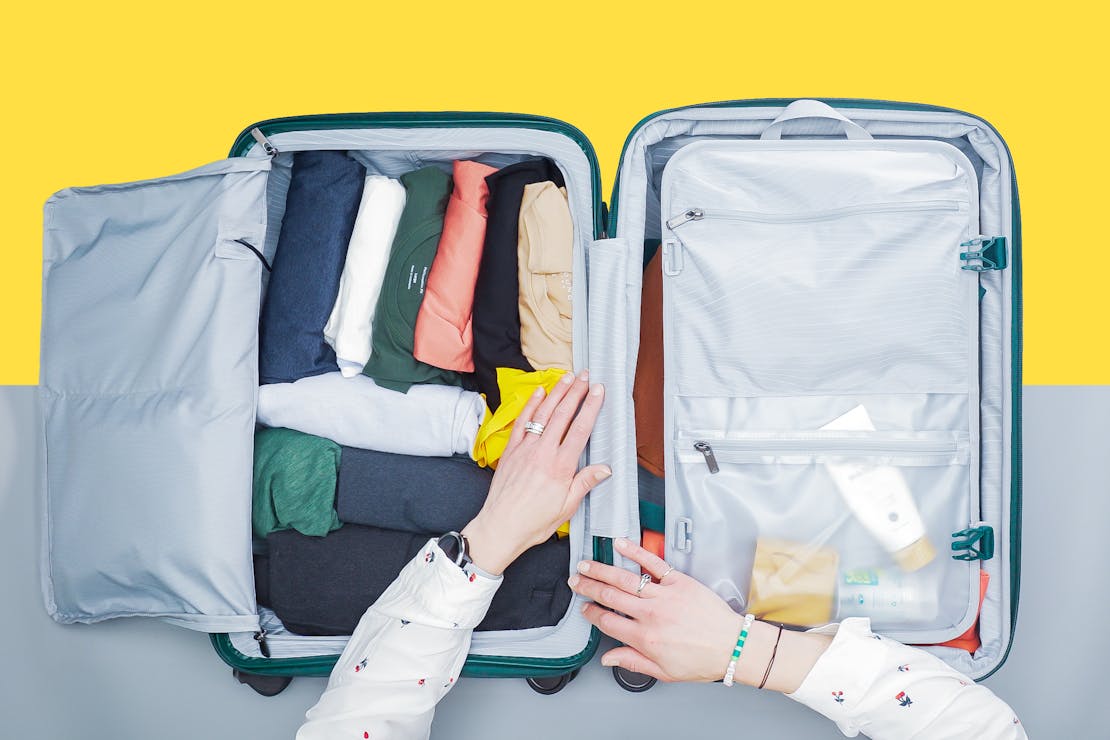So you’re looking for the best way to pack a suitcase. You’ve come to the right place! Whether you’re a seasoned pro with rolling luggage or a new convert from a travel backpack, we’re happy to have you here.
Why You Should Trust Us
First things first, why should you listen to us? We’ve been testing travel gear since 2017, both at home and all over the world, and rolling luggage is an integral part of that. We’ve tested thousands of products over the years, including carry on luggage. Since the beginning of 2023, we’ve put hundreds of hours into better understanding what travelers are using their rolling luggage for and how that affects travel. In that time, we’ve learned a thing or two about how to pack a suitcase, and we’re amped to share that with you.
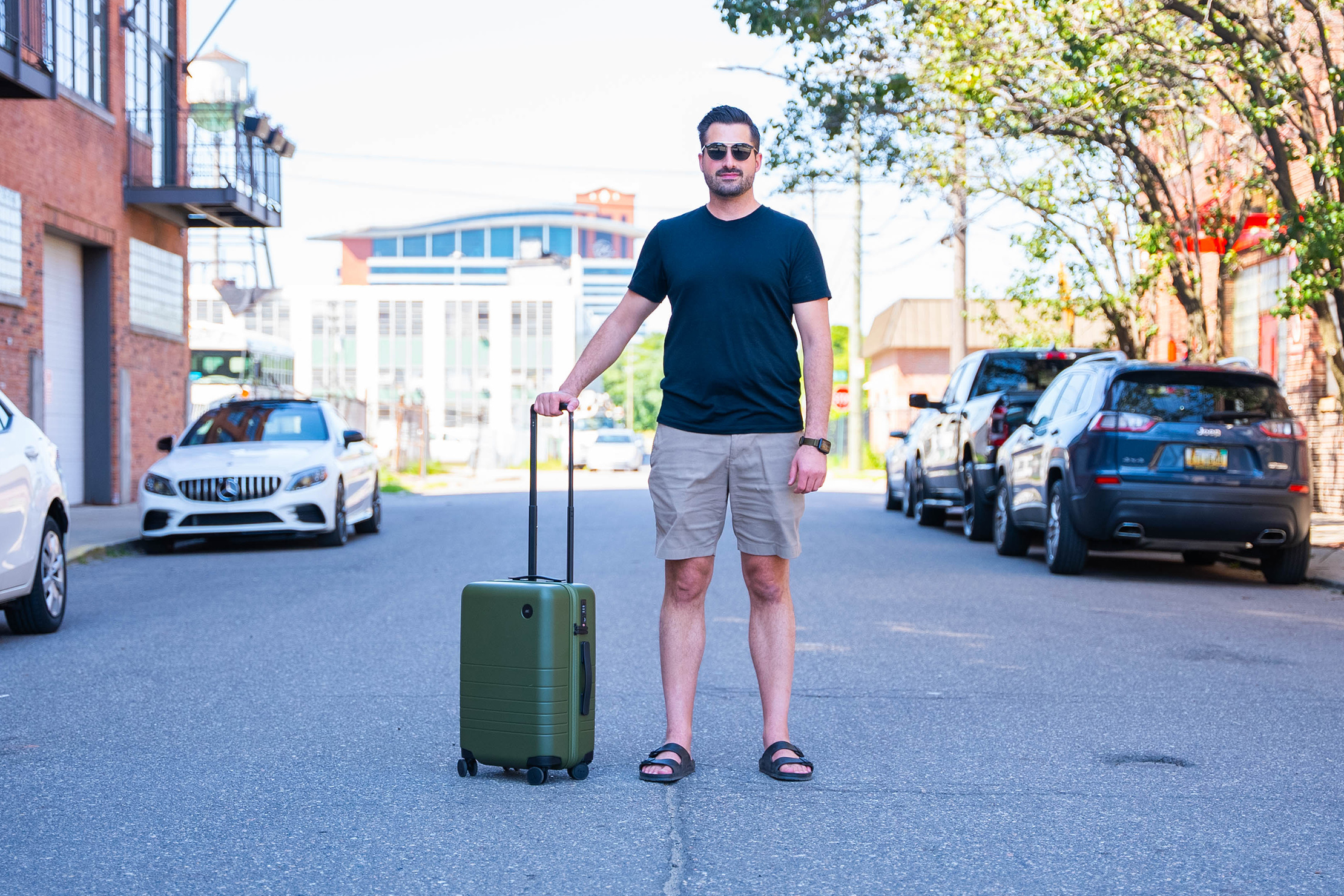
Though one person authored this piece, we rely heavily on a team of travelers for everything we do. We have staff writers who have been using rolling luggage for more than three decades and others who have worked as a digital nomad with just a backpack for years. We’ve covered both ends of the spectrum and are here to help you plan your next trip!
Before we dive too far into things, it’s worth noting that asking how to pack a suitcase will yield a different answer for everyone, and these aren’t set-in-stone rules. You might have larger or smaller gear, different luggage, or unique travel needs. Still, many of the same principles apply when packing a suitcase, no matter who you are or where you’re going. Let’s start with the basics!
The Best Rolling Luggage For Travel
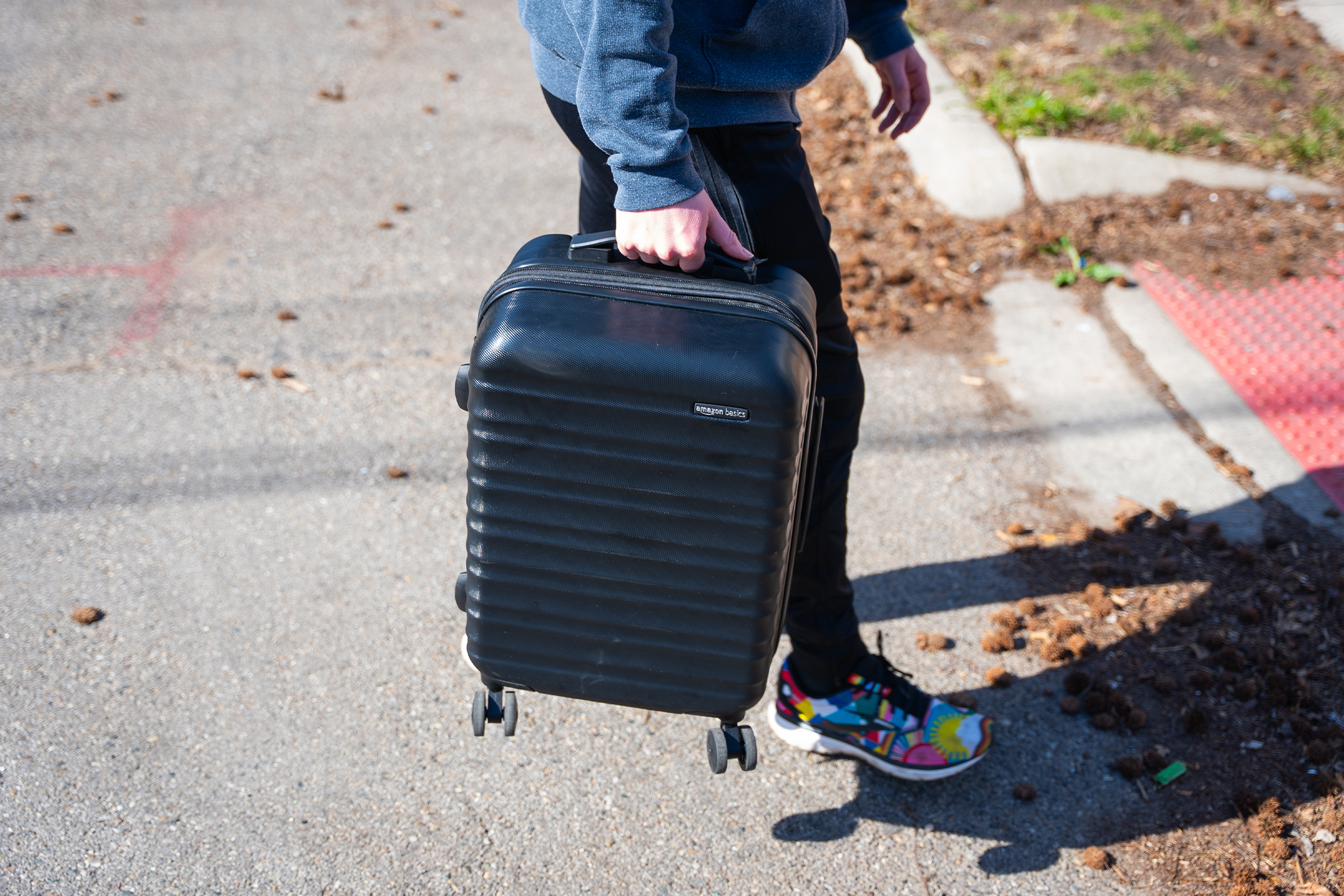
Before packing your bag, you need to get one. That’s one of the hardest things to do, as there are a lot of questions you need to ask yourself before taking the plunge. If you already have your luggage, this section may still be helpful, as it will help you figure out how to best use your bag, which, in turn, will help you figure out the best way to pack a suitcase for your next trip.
Hard or Soft Sided Luggage
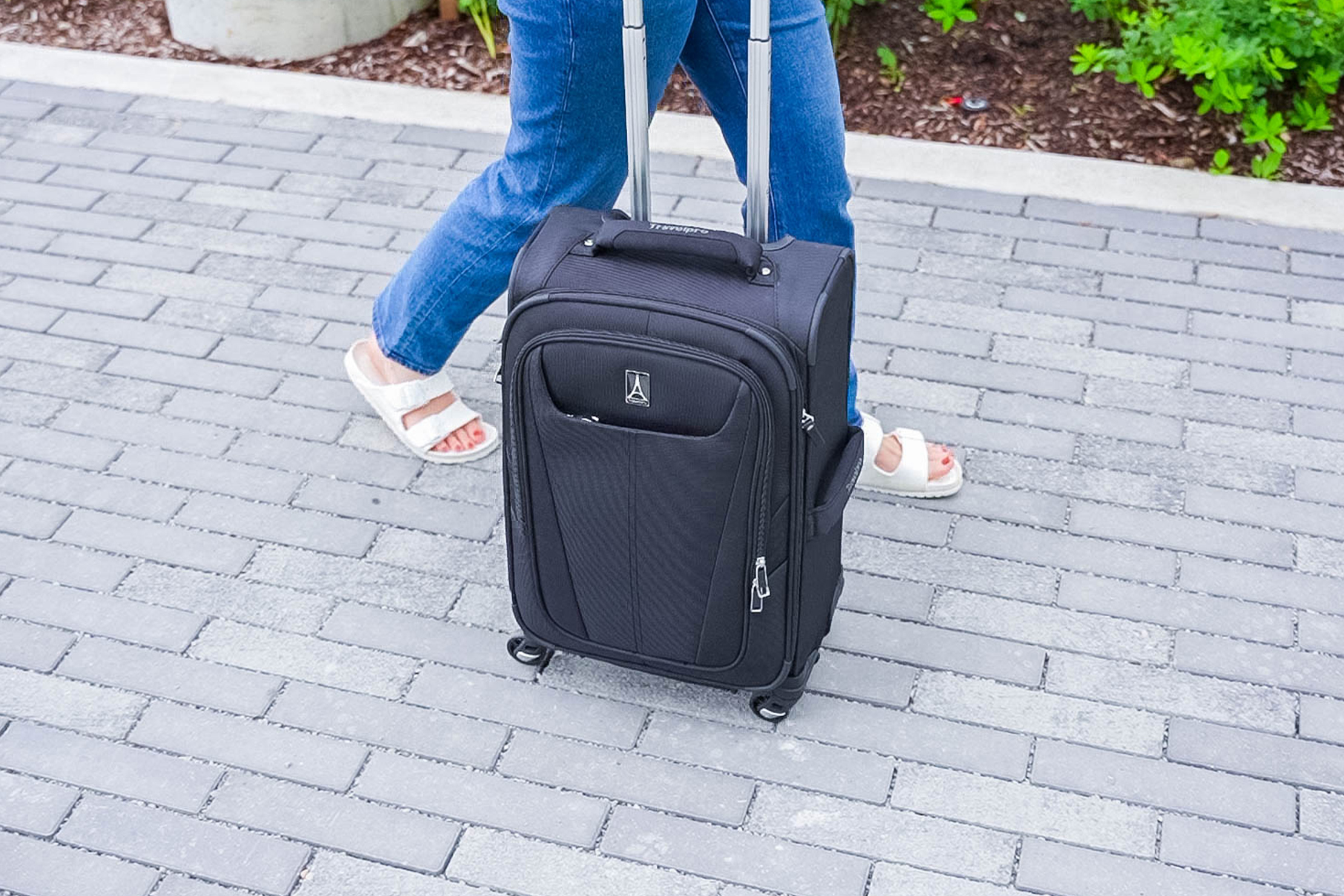
This question is as old as time—er, as old as rolling luggage, anyway! There are perks to both hard and soft-sided luggage, and they can affect your process of packing a suitcase, too. Hard-shelled bags are more durable but don’t budge much, so you can’t shove an extra T-shirt you bought on Canal Street to give to your brother. With a textile bag, you might have that extra inch or two.
Soft-sided luggage typically has secondary compartments, which help you stay organized and give you a place to stow quick-grab items on the outside of your bag rather than inside the main compartment. Some hard-sided luggage has these, but it isn’t common and often isn’t as streamlined. Again, this gives the leg-up to textiles when storing and organizing gear.
Two or Four Wheeled Luggage
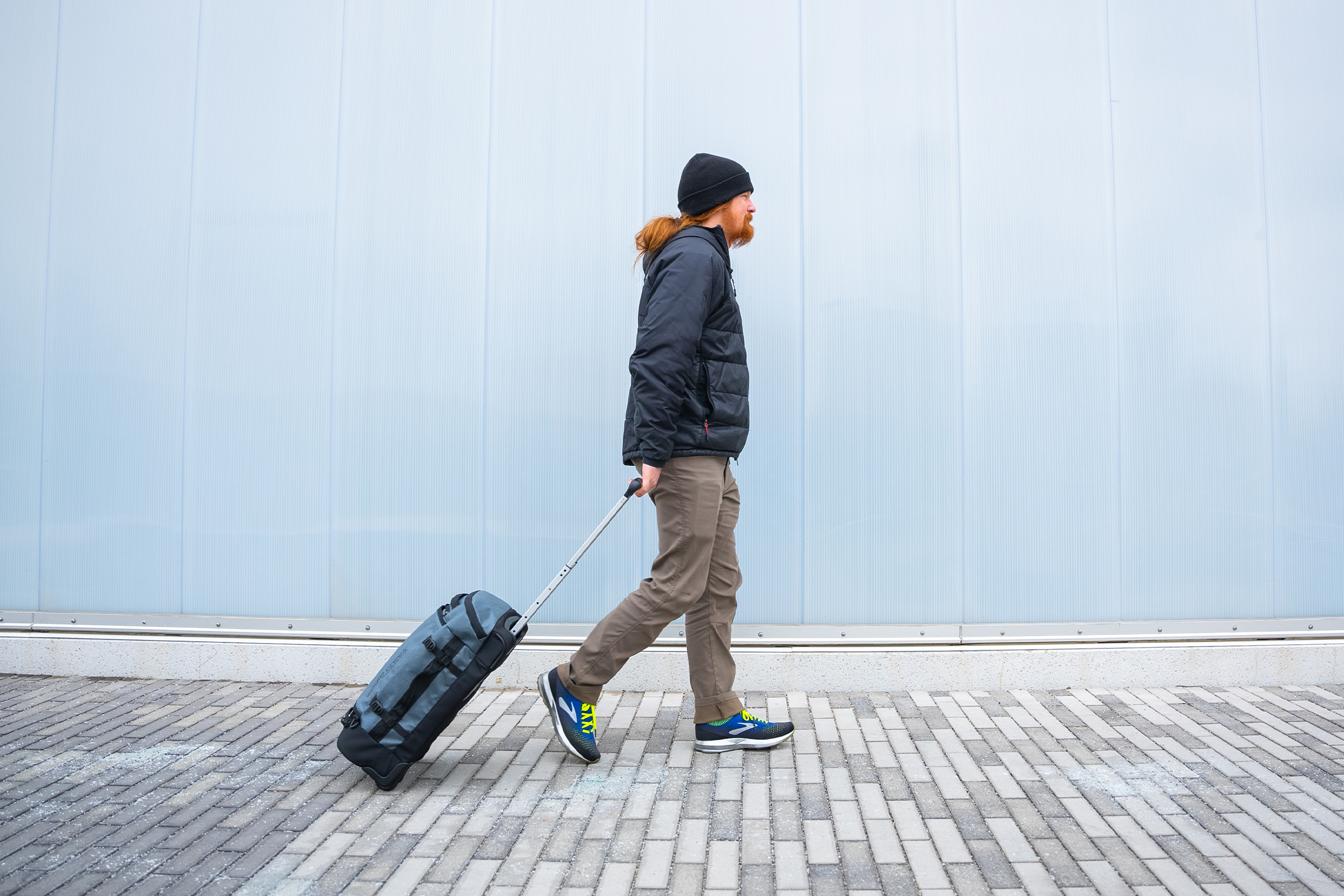
Four-wheeled luggage is a no-brainer for many travelers; however, it is worth considering both. On four wheels, you can quickly transition between two modes based on the ground you’re rolling over. However, two-wheeled options are usually made with larger wheels that tend to be more reliable and durable.
That said, there are some caveats. If the worst happens, and a wheel breaks on your luggage, the kind of bag you bring becomes essential. On four-wheeled luggage, you can likely still use two to keep your journey going. A blow-out will end your ability to roll the bag on two-wheeled bags. It’s harder to blow out a wheel that doesn’t spin 360 degrees, which should factor into your decision, too.
Let’s think about four-wheeled luggage like a mechanical pencil. Sure, when it works, it’s flawless. Most of the time, you won’t have an issue, but the results can be catastrophic when you do. Just like you wouldn’t only have a mechanical pencil on Scantron testing day, you wouldn’t want to take four-wheeled luggage to an ancient city with exclusively cobblestone streets. With fewer moving parts, two-wheeled luggage is a trusty Ticonderoga pencil. It isn’t fancy, but it’ll get you there, and there won’t be many bumps in the road on the journey. This doesn’t significantly affect how to pack a suitcase, but your hard work was for nothing if you can’t reach your destination!
Internal Organization
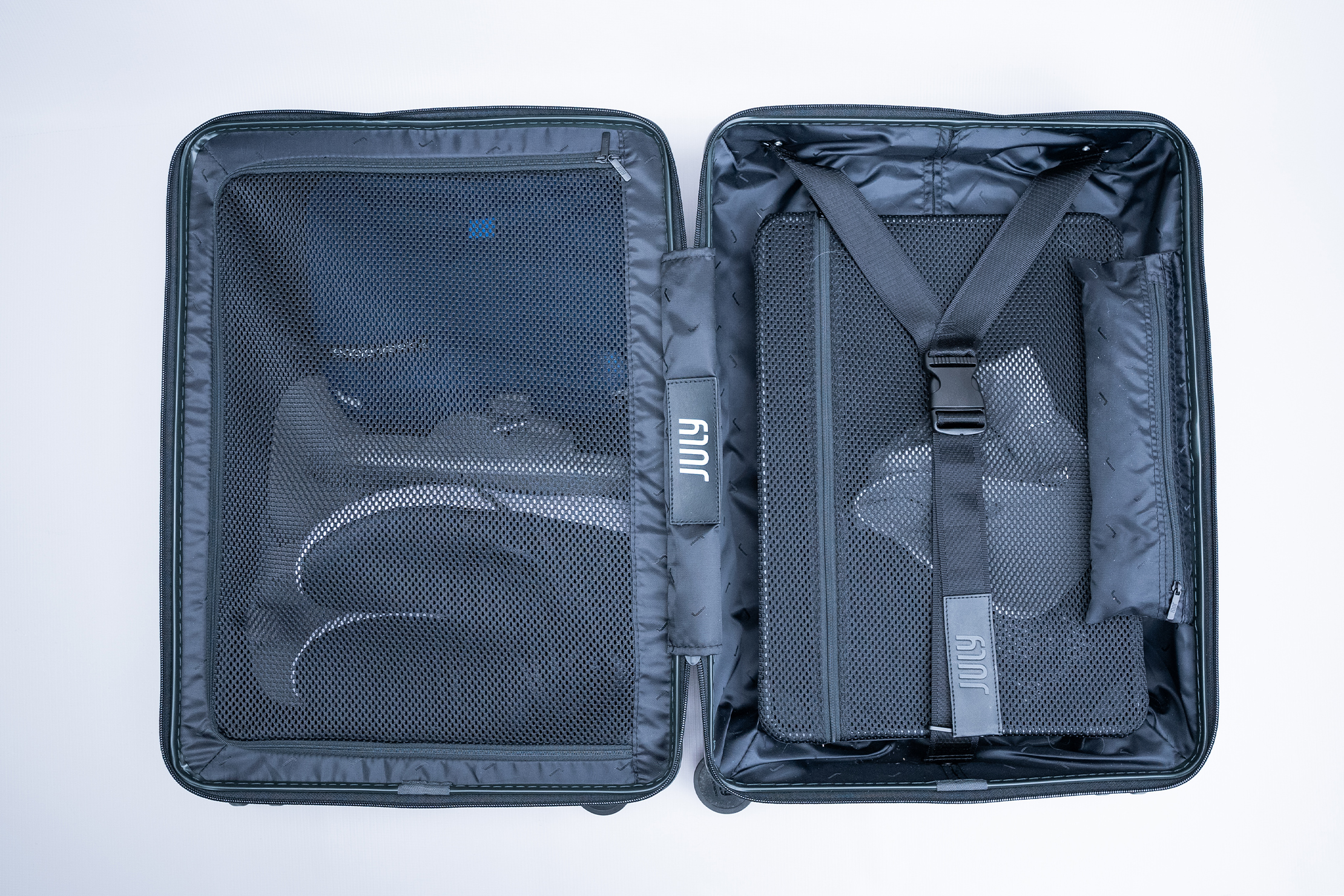
The type of organization you need will heavily depend on what you’re bringing. The style we see most often consists of a large open area on one side with a compression system and a zippered compartment on the other. Often times, the zippered compartment also has some pockets on the lid. This will work well for most travelers; however, if you do a specific type of traveling most often (e.g. business travel), you’ll want to consider choosing luggage that best suits your specific gear.
Some brands will include an apparatus for stowing a suit or dress, a toiletry pouch, or other dedicated kinds of organization. If your travels necessitate dressing up or other specific needs, look into bags with these features. For general travel, the standard segmentation will likely be fine. Learning how to pack a suitcase will be easier once you’ve got the organization that works for you.
Additional Features
There aren’t as many extras on rolling luggage compared to some of the travel backpacks and daypacks that we’ve tested; however, there are some that you might be interested in, like unique locking systems that make getting inside your pack harder for a stranger.
Always ensure these are TSA-approved locks, as airport security will break in if they can’t easily open them. As mentioned earlier, not all rolling luggage will have a secondary compartment. If you want quick access to gear without carrying a personal item daypack or sling, ensure your bag has those. It might seem like every bag manufacturer would ensure their handles have added comfort features, but this isn’t true. If you’re worried about your hand being uncomfortable or you have arthritis, look for a bag with extra padding and grip. Last but certainly not least are colorways. Today, many brands strive for minimalism, which means bright colors are out the window. If you’re into saturated colorways, options exist, and you should go for it!
What Gear Already Has A Home?
Thanks to the internal organization offered by the bag you choose, much of your gear will likely already have a home. There’s no blanket best way to pack a suitcase; however, we have a few insights here.
Regarding the standard design we mentioned earlier (a large, open area with compression and a zippered compartment with pockets on the lid), there are a few ways to go about packing.
Most travelers pack their clothing on the side with the compression mechanism, as this enables you to save space by making your clothing smaller. You can pack your clothing loose, in packing cubes, or by wrapping more oversized items around smaller ones. In our experience, packing cubes will lock down your clothing the best.
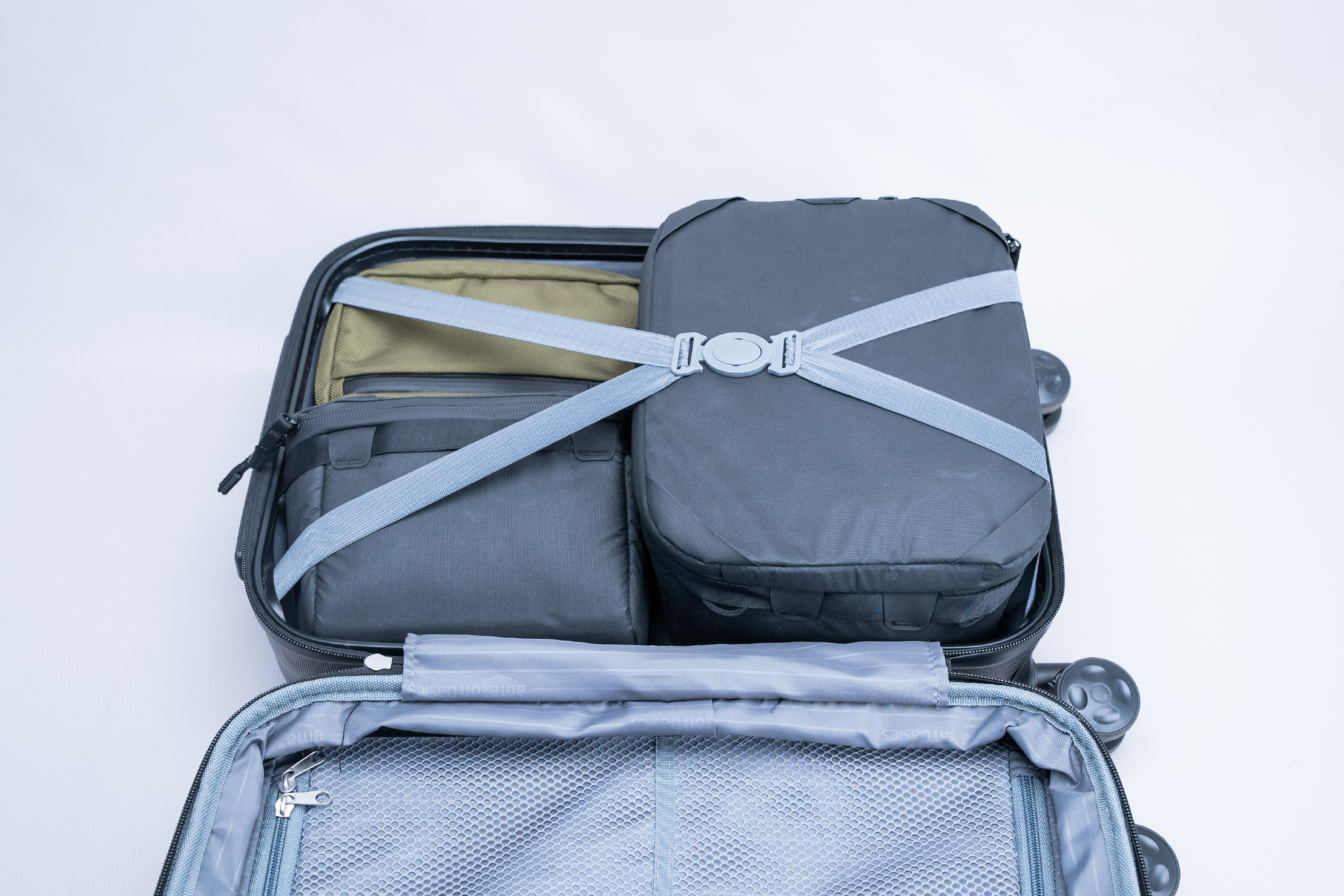
Some users prefer this space for miscellaneous gear, like shoes, pouches, and other items that don’t have a home elsewhere. This especially makes sense if you have larger feet, as your shoes may not fit in the zippered compartment, or if you need to pack other significant items that won’t fit over there. As we said, there's no right way when learning to pack a suitcase; it’ll depend on what you’re bringing.
Since the zippered compartment can be used for clothing or various items, This is a solid place to stow things you don’t want to escape, as there’s a zippered closure here. This also works for dirty items, too. Or, stow clean items inside and leave the dirty stuff across the way. The possibilities are endless!
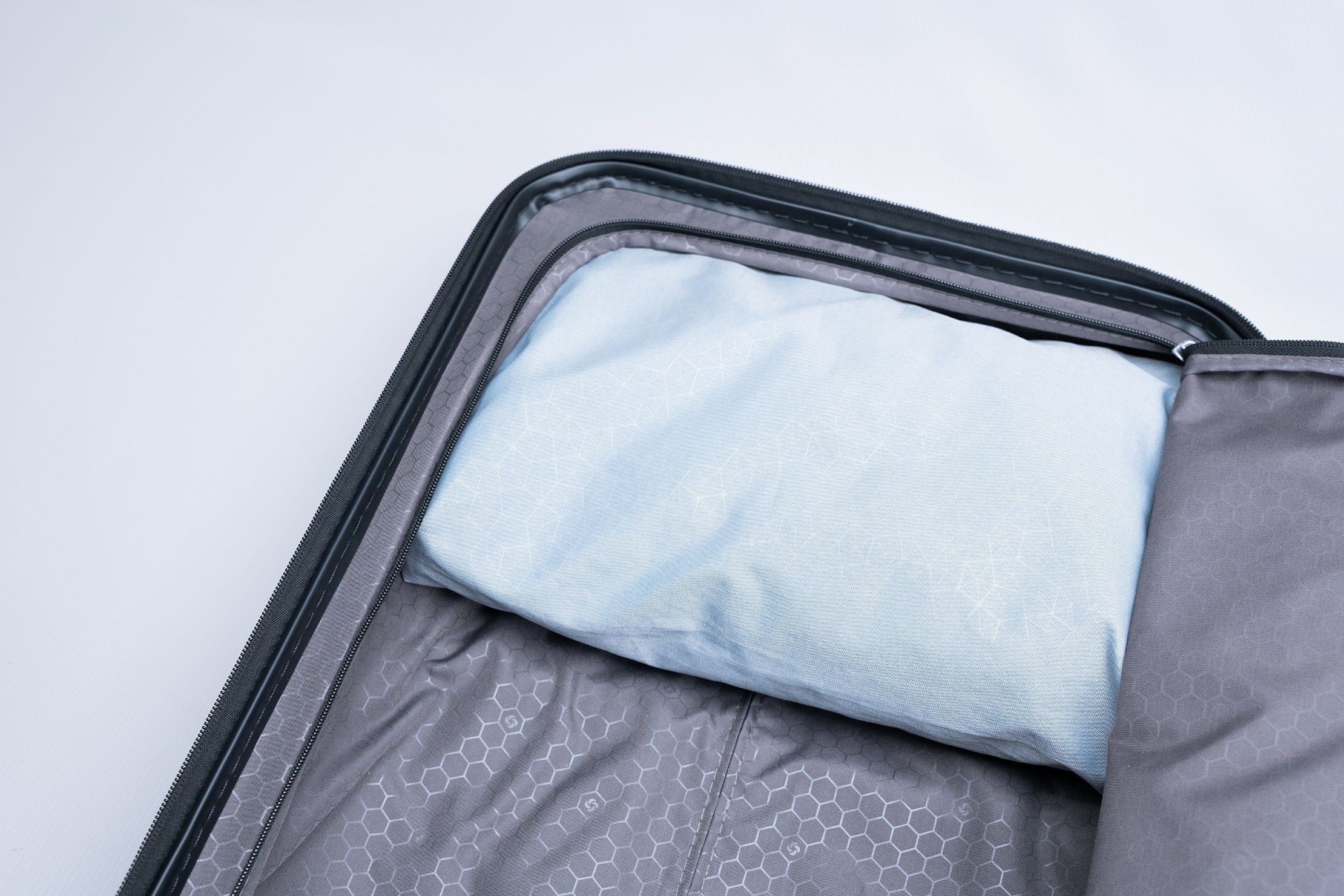
Oftentimes the pocket on the lid of the zippered compartment will have enough depth to stow more oversized items; other times, they’ll only work for flatter gear. Depending on their size, you can determine what works best for you. On a trip to Boston, this space was helpful as a makeshift tech pouch, which included three charging cables, two wall chargers, a battery bank, and a USB-C dongle. This wouldn’t work for a more extensive kit; however, most travelers’ tech will fit here. Or, use it to keep socks and underwear accessible and away from larger clothing items.
If you opt for luggage with external compartments, this is a solid place to stow items you’ll use at the airport and in transit, like maps, books, and snacks. When learning to pack a suitcase, you’ll learn how safe the gear you stow here is and whether you can place delicate items like a tablet or eReader inside. However, these are the most accessible places for thieves to strike, so it’s essential not to keep anything you can’t live without here. If you lose your passport, your vacation is much more stressful.
Wrangling The Rest
Part of the reason rolling luggage is so popular is because of everything you can fit inside it. If you don’t want to use additional organizers and segmentation, you don’t have to, but we recommend it to make sure that you don’t lose anything and can find your gear more easily.
First, we recommend packing cubes. There are many options out there so we made a guide to help you choose the best packing cubes for you. Still, we’ll talk about how they factor into how to pack a suitcase. Essentially, they keep your gear organized and compress it into a smaller package. That way, smaller articles of clothing aren’t falling out of the compression side or getting stuck in the zipper across the way.
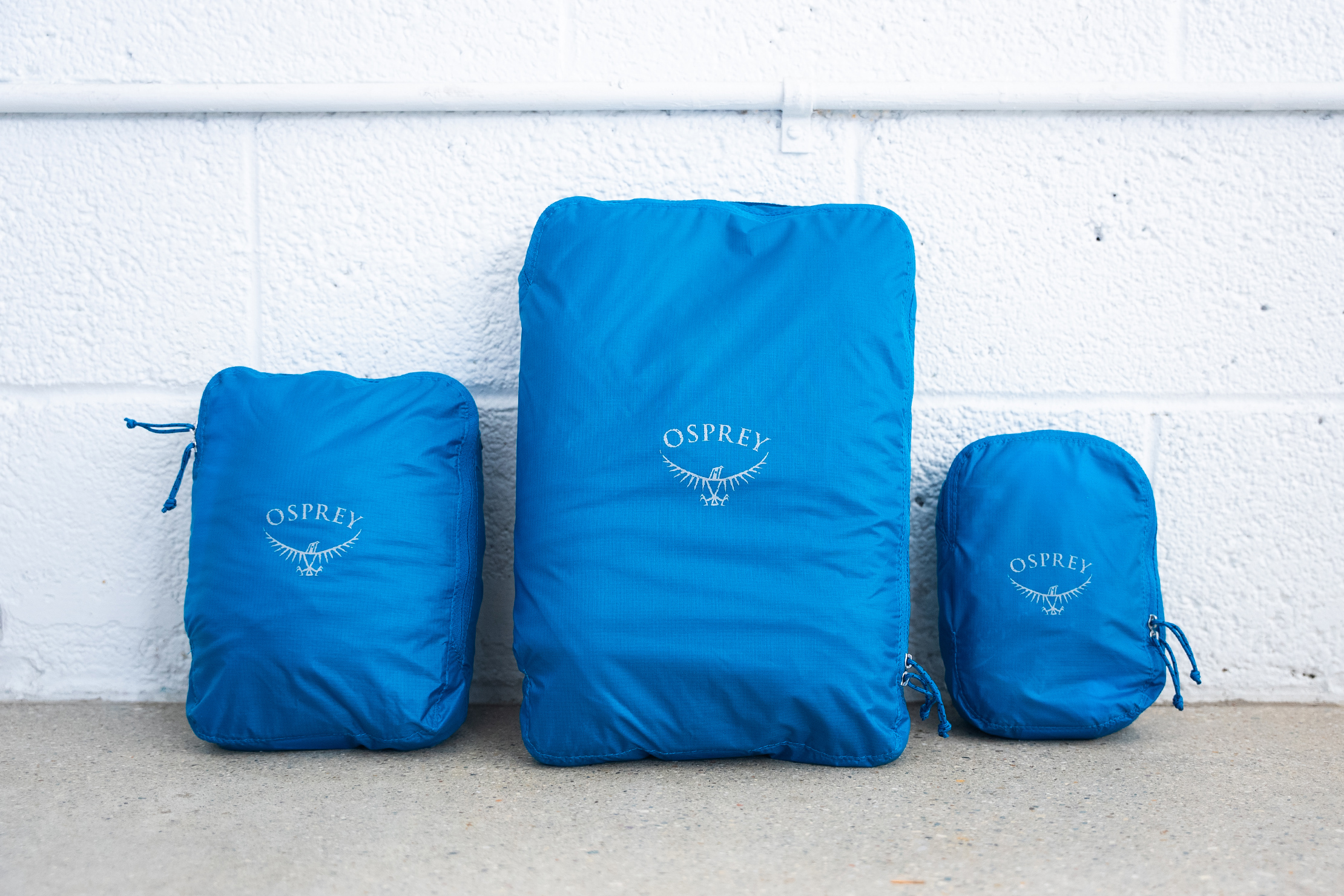
Next, a tech pouch is essential for most modern travelers. So much of what we bring on every trip must be charged at the end of the day, so bringing cables, power banks, and other dohickeys is imperative. Locking all your tech down in one place lets you know where it is, and you can get to it quickly when you need to charge your phone at the airport. Plus, you can quickly move it from one bag to another instead of moving a bunch of loose cables.
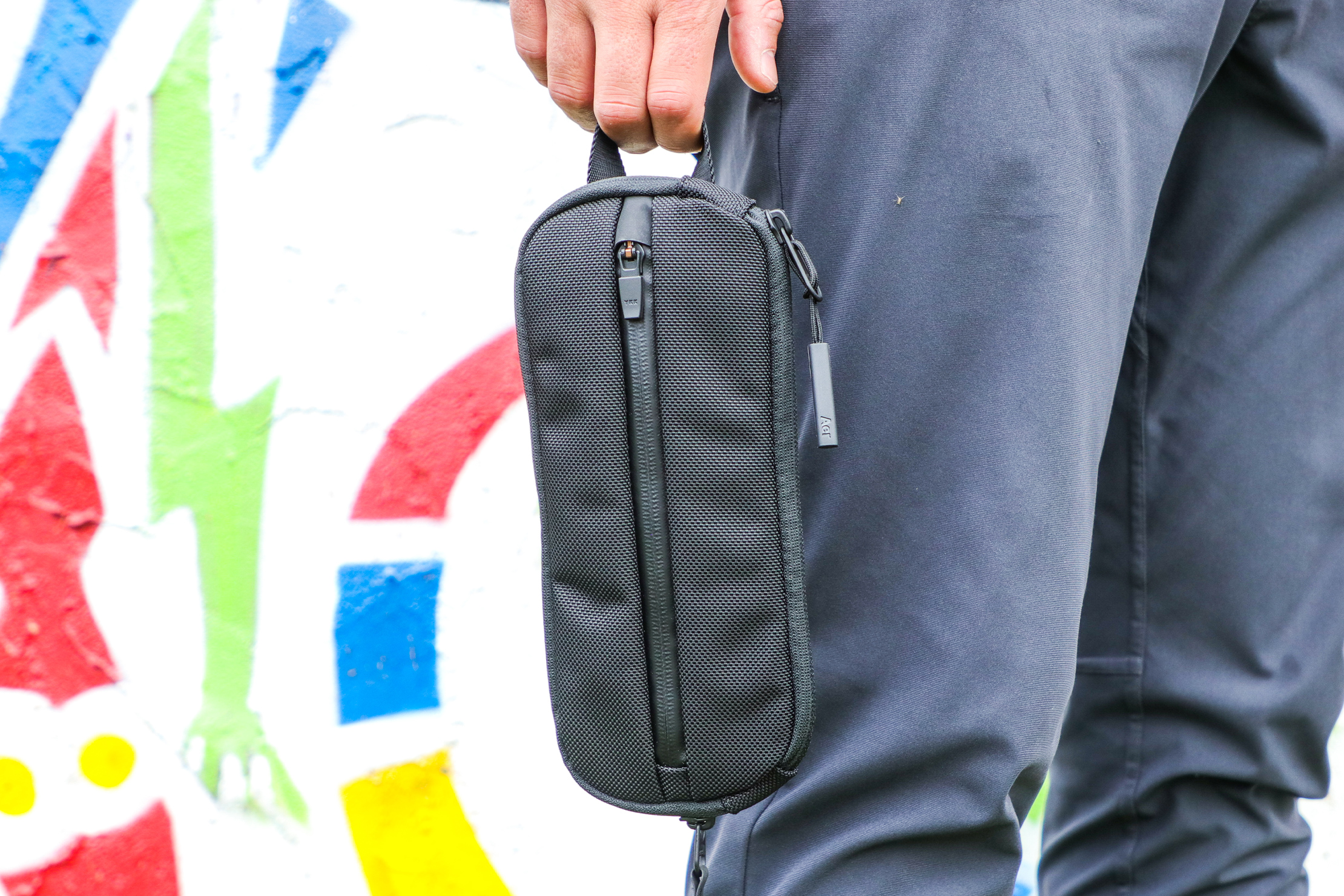
Some suitcases will come with a toiletry bag, but we think it’s best to find one that works for you no matter your mode of transportation. You’ll likely need a 3-1-1 bag for airport security anyway, and these are often made from waterproof materials. This will keep the inside of your new bag clean from spills. An integral part of how to pack a suitcase is having a plan to keep it in good shape for your next trip, and keeping toothpaste off the liner is a good start.
If that isn’t enough, other segmentation devices, like stuff sacks and pouches, are designed to hold various odds and ends. We typically like to bring one or two of these, just in case. You can use a stuff sack as a dirty laundry bag (if your suitcase didn’t come with one), an extra pouch to hang onto souvenirs, or a zippered bag to decorate with that you collect on your journeys. These aren’t essential, but the best way to pack a suitcase is to ensure that everything has a home, and if you bring an extra stuff sack, it can pick up a lot of slack (or dirty socks) you accumulate along the way.
How To Organize Your Gear
We’ve discussed where to put your gear but not how to organize it. We dive into this in our post that details how to pack a carry-on for one bag travel, so check that out for a deeper look.
Essentially, there are three ways to pack your gear. First, you can pack by context, which means packing gear together that you’ll use together. For example, pack your Nintendo Switch with your games, controller, charger, and blue light glasses because you’ll use them all together. If you packed each item by type, they’d be spread out around your pack, and it would take longer to get everything to play.
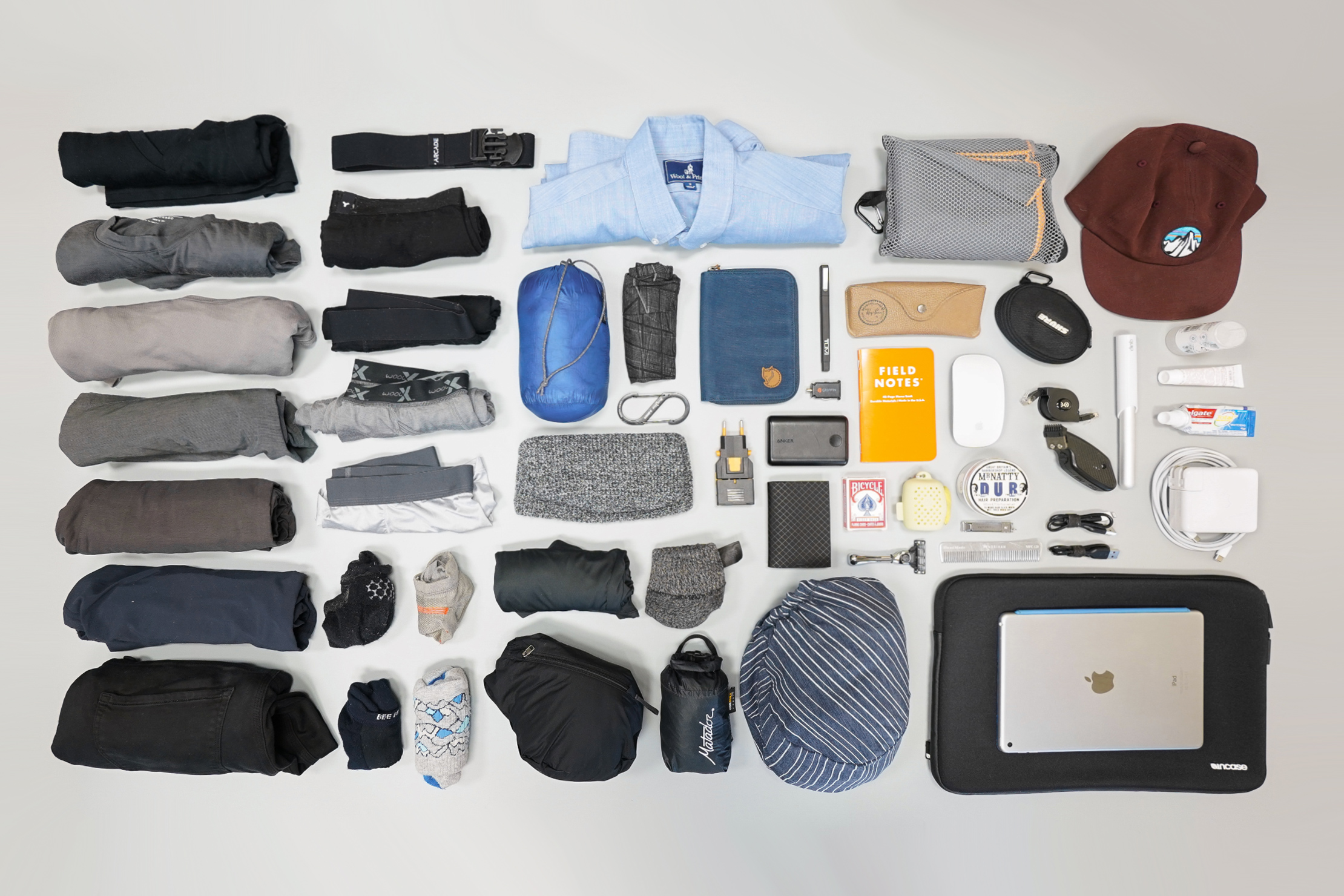
If you caught that reference in the last paragraph, the next way you can pack is by type. Essentially, you pack similar items together. Charging cables go together, socks stick by one another, and shoes are all in the same place. This makes it easy to know where everything is, but it can get tedious if you bring many different kinds of things.
Last, there’s packing by category. This is similar to packing by type but is more general. All your clothing gets packed together, tech stays in the same pouch, and toiletries are in it together. This is likely the most common way to pack, but that doesn’t mean it’s the best, as different travelers will have unique routines at home and on the road.
When learning to pack a suitcase, figuring out what works best for you is essential. Likely, it’s a combination of the three types. For example, you can pack your Nintendo Switch gear together because you’ll almost always use that gear simultaneously. Then, you can keep your socks and underwear in the same packing cube or zippered pocket because you’ll need those every day. The rest of your clothing, regardless of the type, can all go together, as you never know precisely what you’ll be wearing on a day of travel until you get to your destination and see the weather and other environmental factors around you. This isn’t a science, but you’re probably catching our drift. Go with the flow, and you’ll be fine!
External Gear
Just when you thought we were done, we return with more gear! Packing a suitcase is challenging, but it isn’t as hard if everything doesn’t have to fit inside. While bringing another bag isn't technically “one bag” travel, bear with us.
A sling is an excellent way to keep gear on hand that you want quick access to without carrying a backpack. Most airlines count slings as a personal item, so you can’t have one alongside a daypack and a carry on. However, a sling can often carry everything you need daily or for a flight, like entertainment, snacks, and charging options, so you don’t have to worry about digging into your rolling luggage, even if you’re lucky enough to have one with a secondary compartment.
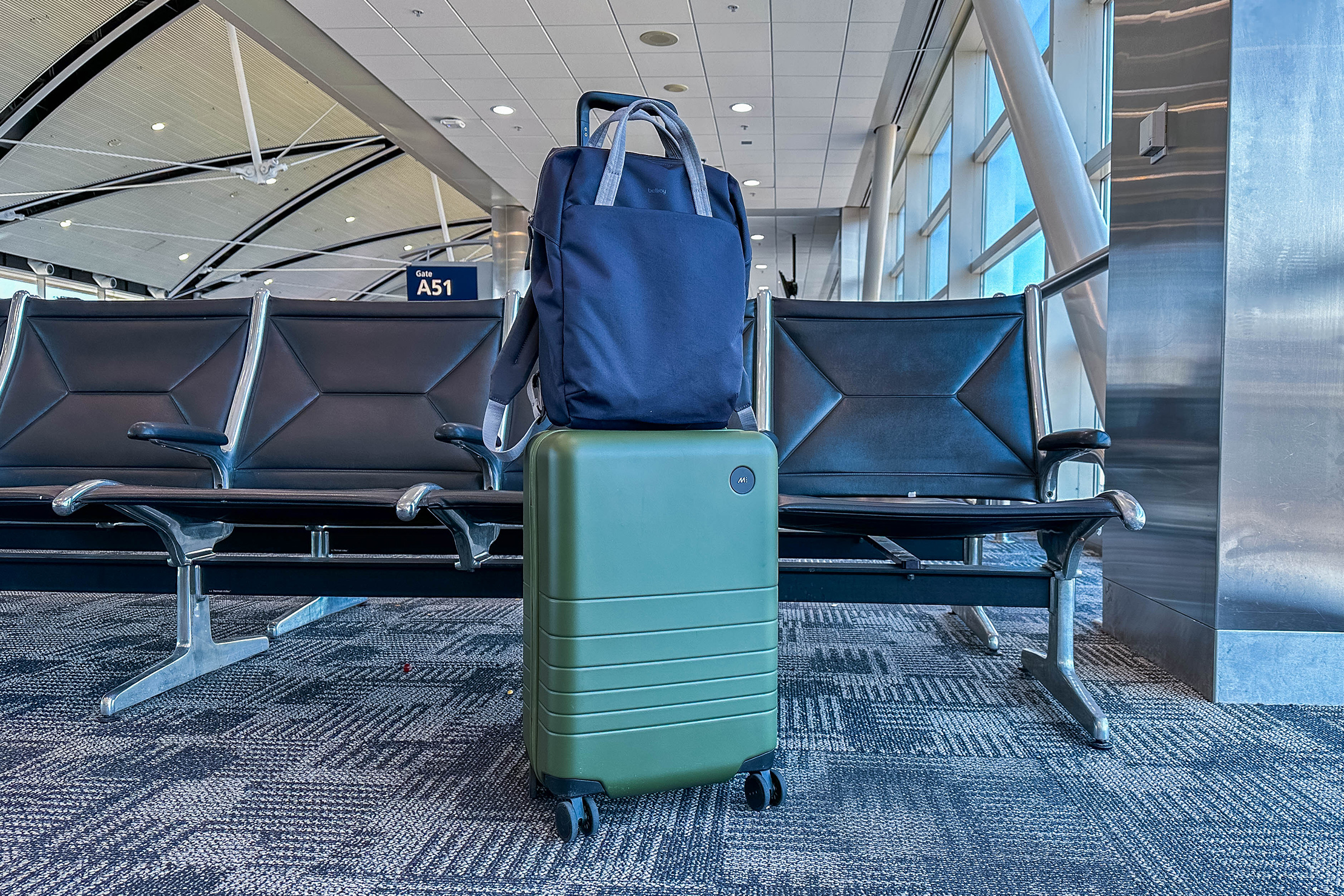
Or, you can always go with a larger bag. A personal item backpack is the perfect companion for rolling luggage for several reasons. First, it offers more space and a place to stow your laptop. A lot of rolling luggage doesn’t have a dedicated place to put your computer, and carrying a daypack remedies that issue. Next, a backpack comes in handy once you’ve landed, as you don’t want to be lugging around a suitcase all day while walking through London. Plus, unlike most slings, it’ll give you space to stow your travel water bottle. Last, many of them have a luggage pass-through, so you can keep your shoulders and back comfortable when rolling your bag.
Pack It Up, Test It Out
Last but not least is the testing phase. Now that you’ve figured out how to pack a suitcase and the best way to pack a suitcase for your specific needs, get out into the world and see how it works. We recommend taking a shorter trip to test the process and move up from there. As the saying goes, they didn’t build Rome in a day, and you won’t become an expert packer in one, either. Still, you’re well on your way, and we’re excited to see you blossom!
So, there you have it! Our guide on how to pack a suitcase. Hopefully, at this point, you have your feet planted firmly on the ground and are ready to make the plunge to pack for your first trip, whether that’s across the city or the globe. Happy travels!
